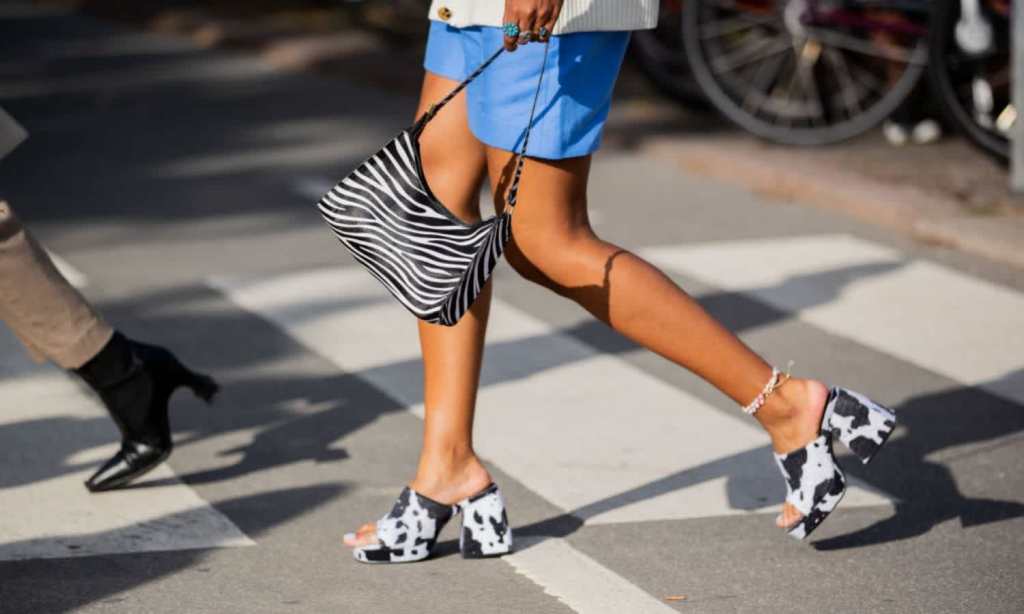Along with Y2K styles, loose-fitting jeans and chic, power suits, sustainability has become a major trend in fashion in 2021. Though it’s of course been around for the last few years, this year, more and more brands are claiming to be sustainable. And, with fast fashion now known to be responsible for 10% of the world’s carbon emissions, the fact brands want to distance themselves from that startling stat, makes sense.
But that then begs the question, are those fashion brands actually sustainable? Or, are they just claiming to be?
According to Greta Thunberg, no. Well, many of them aren’t. In a recent Instagram post, the environmental activist wrote: “Many are making it look as if the fashion industry are starting to take responsibility by spending fantasy amounts on campaigns where they portray themselves as ‘sustainable’, ‘ethical’, ‘green’, ‘climate neutral’ and ‘fair’.”
“But let’s be clear: This is almost never anything but pure greenwashing,” she continued. “You cannot mass produce fashion or consume ‘sustainably’ as the world is shaped today. That is one of the many reasons why we will need a system change.”
“The fashion industry is a huge contributor to the climate-and-ecological emergency, not to mention its impact on the countless workers and communities who are being exploited around the world in order for some to enjoy fast fashion that many treat as disposable(s).”
So, from a practical perspective, how can we figure out whether or not a brand is in fact sustainable? We reached to Australian sustainability specialist Lisa Heinze, and here’s what she said.
What Actually Is Greenwashing?
Firstly, what exactly is greenwashing? “Greenwashing takes many forms, but essentially is when an organisation makes claims to make themselves sound ‘greener’ than they really are,” says Dr Heinze.
How Can We Work Out Which Brands Are Actually Sustainable?
Dr Heinze says she agrees with Thunberg — fast fashion, by definition, can’t in fact be sustainable. “While it is incredible to see an increased use of sustainable fibres, like organic cotton, and essential that we see improvements in working conditions of garment workers, when the business model remains based on creating and selling enormous quantities of clothing it cannot be sustainable,” she explains.
“The creation of textiles and fashion is extremely energy and resource-intensive, and while some brands promote the fact that they will ‘recycle’ your clothing, that, too, requires energy and resources, and many textiles remain unable to be recycled.
“The most important thing to know is that apart from a number of sustainable fashion entrepreneurs who started with sustainability as their core value, most fashion companies on some sort of sustainability journey.
“Sustainability itself is incredibly messy with a variety of tradeoffs when it comes to resources in particular. If a company is making claims, however, you want to see some sort of proof. Certification of organic cotton, for example, or accreditation by Fairtrade or Ethical Clothing Australia. The Good On You rating app can also tell you a lot of information about your favourite fashion brands.”
When It Comes to Sustainable Fashion, What’s the One Thing to Keep In Mind?
If you remember only one thing about sustainable fashion, make it this: buy only what you love, in the best quality you can afford, and in a style you will actually wear, says Dr Heinz.
“The industry is working hard to improve sustainability in the supply chain, thanks to consumer pressure,” she says. “So keep it up! Ask your favourite brands what they are doing. And buy less. Personally, I love renting and borrowing pieces to keep things fresh.”
Read more stories from The Latch and subscribe to our email newsletter.







